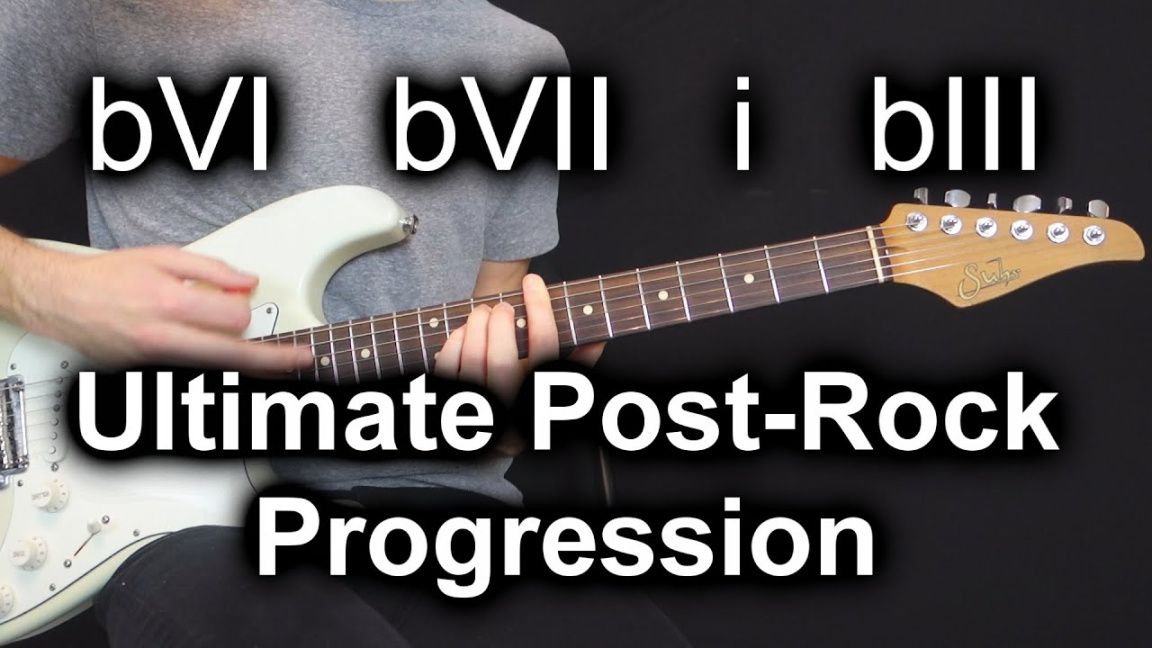—
Title: Beyond the Riff: Unlocking the Emotional Depths of Post-Rock Guitar Chord Progressions
So, you’re diving into the world of post-rock guitar. Awesome choice! It’s a genre that’s all about atmosphere, emotion, and building these huge, sonic landscapes. One of the key ingredients? Chord progressions. Forget your standard verse-chorus-bridge stuff; post-rock thrives on slow-burning, evolving sequences that tug at your heartstrings. Let’s break down how to get that sound.
The Foundations: Simple and Sustained
Post-rock isn’t about flashy solos or shredding. It’s about creating textures. That means your chord progressions often lean on simple, open chords and sustained notes. Think major and minor chords, but with a twist. Instead of strumming them in a typical rock pattern, let them ring out.

Open Chords and Their Power: Chords like E major, A minor, C major, G major, and D major are your bread and butter. The open strings give you that rich, resonant sound that’s perfect for creating those vast, spacious atmospheres.
Building the Atmosphere: Modal Exploration
To really get that post-rock vibe, you need to explore modes. Modes are like different flavors of scales, and they can add some serious emotional depth to your progressions.
Aeolian (Natural Minor): This mode is your go-to for those melancholic, introspective moments. It’s the classic minor sound, but used in a slow, deliberate way, it becomes incredibly powerful.
The Dynamics of Repetition and Variation
Post-rock thrives on repetition. You’ll often hear the same chord progression repeated for minutes at a time, but with subtle variations.
Repetition as a Tool: Don’t be afraid to repeat a simple progression. It’s in the repetition that the emotion builds. Think of it like a slow-motion wave, gradually getting bigger and more intense.
Layering and Textures
It’s not just about the chords themselves; it’s about how you layer them.
Multiple Guitar Parts: Post-rock bands often have multiple guitarists, each playing different parts that weave together. One might be playing the main chord progression, while another adds atmospheric textures with arpeggios or sustained notes.
Building Tension and Release
A good post-rock progression will take you on a journey. It’ll build tension, create a sense of unease, and then release it in a moment of catharsis.
Crescendos and Decrescendos: Use volume swells and gradual increases or decreases in intensity to build tension and release it.
Examples and Inspiration
To really get a feel for post-rock chord progressions, listen to some of the masters.
Explosions in the Sky: Known for their soaring, emotional crescendos and beautiful, layered guitar textures.
Conclusion
Post-rock guitar chord progressions are about more than just playing chords. They’re about creating emotions, building atmospheres, and taking the listener on a journey. It’s about exploring the depths of sound and using repetition, variation, and dynamics to create something truly powerful. So, grab your guitar, experiment with simple chords and modes, and don’t be afraid to let those notes ring out. Embrace the sustain, explore the dynamics, and let your emotions guide you. You’ll be creating those sweeping, atmospheric post-rock soundscapes in no time. Remember, the beauty of post-rock lies in its ability to evoke emotions without relying on traditional song structures. So, let your creativity flow, and don’t be afraid to experiment. Happy playing!

